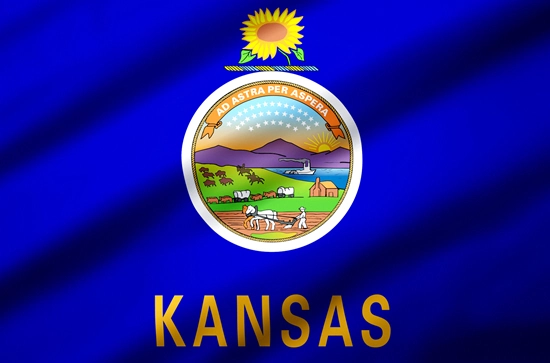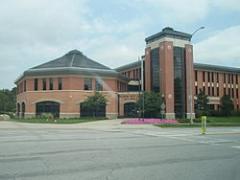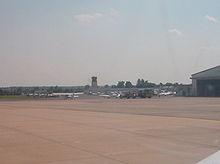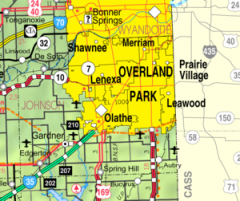Olathe, Kansas Blood Testing Facilities
 Represents a LabCorp blood testing facility
Represents a LabCorp blood testing facility Represents a Quest Diagnostics blood testing facility
Represents a Quest Diagnostics blood testing facility

Nearby Labcorp Blood Testing facilities:
- Labcorp Center Distance: 6 m, 10600 Quivira Suite 340, Overland Park, Johnson County, KS, 66215
- Labcorp Center Distance: 7 m, 10600 Mastin St Entrance C, Overland Park, Johnson County, KS, 66212
- Labcorp Center Distance: 8 m, 6815 Hilltop Rd, Shawnee, Johnson County, KS, 66226
- Labcorp Center Distance: 10 m, 8901 W 74Th St Ste 147, Shawnee Mission, Johnson County, KS, 66204
- Labcorp Center Distance: 12 m, 1000 Carondelet Dr, Kansas City, Jackson County, MO, 64114
- Labcorp Center Distance: 15 m, 6675 Holmes Ste 460, Kansas City, Jackson County, MO, 64131
- Labcorp Center Distance: 16 m, 2340 E Meyer Blvd Ste 328, Kansas City, Jackson County, MO, 64132
- Labcorp Center Distance: 17 m, 5701 State Avenue, Kansas City, Wyandotte County, KS, 66102
- Labcorp Center Distance: 24 m, 1643 Ne Douglas St, Lees Summit, Jackson County, MO, 64063
- Labcorp Center Distance: 27 m, 19550 E 39Th St Suite 322, Independence, Jackson County, MO, 64057
- Labcorp Center Distance: 29 m, 9411 N Oak Trafficway Ste 210, Kansas City, Clay County, MO, 64155
- Labcorp Center Distance: 60 m, 212 S Woodbine Rd, Saint Joseph, Buchanan County, MO, 64506
- Labcorp Center Distance: 97 m, 1133 College Ave Bldg E, Manhattan, Riley County, KS, 66502
Nearby Quest Blood Testing facilities:
- Quest Center Distance: 2 m, 20920 W 151St St, Olathe, Johnson County, KS, 66061-7248
- Quest Center Distance: 6 m, 10550 Quivira Rd, Overland Park, Johnson County, KS, 66215-2306
- Quest Center Distance: 9 m, 12140 Nall Ave, Overland Park, Johnson County, KS, 66209-2503
- Quest Center Distance: 10 m, 8901 W 74Th St, Shawnee Mission, Johnson County, KS, 66204-2200
- Quest Center Distance: 12 m, 1010 Carondelet Dr, Kansas City, Jackson County, MO, 64114-4823
- Quest Center Distance: 16 m, 10940 Parallel Pkwy, Kansas City, Wyandotte County, KS, 66109-4512
- Quest Center Distance: 18 m, 8421 Clint Dr, Belton, Cass County, MO, 64012-5330
- Quest Center Distance: 23 m, 1130 W 4Th St, Lawrence, Douglas County, KS, 66044-1328
- Quest Center Distance: 24 m, 5400 N Oak Trfy, Kansas City, Clay County, MO, 64118-4361
- Quest Center Distance: 27 m, 19550 E 39Th St S, Independence, Jackson County, MO, 64057-2306
- Quest Center Distance: 31 m, 711 Nw State Route 7, Blue Springs, Jackson County, MO, 64014-2426
- Quest Center Distance: 49 m, 1111 Sw Gage Blvd, Topeka, Shawnee County, KS, 66604-2284
- Quest Center Distance: 61 m, 1213 N Belt Hwy, Saint Joseph, Buchanan County, MO, 64506-2546
- Quest Center Distance: 98 m, 1419 Westport Landing Pl, Manhattan, Riley County, KS, 66502-2908
Kansas Hormone Replacement Services
Are you interested in Hormone Restoration, but are unsure where you should turn for the best possible treatment? The Conscious Evolution Institute is a licensed medical clinic specializing in Hormone Replacement Therapy options such as Testosterone and Human Growth Hormone HRT. If you are over the age of thirty, and feel that you may be suffering from medical conditions related to premature aging or hormone imbalance, we can help you discover if Hormone Imbalance is wreaking havoc on your life.
The Conscious Evolution Institute has affiliate physicians all over the state of Kansas, and all you have to do is contact us to set up an appointment. We have streamlined the entire process, and can even have our affiliate meet you at your home or business. If you are curious about Hormone Replacement, don't wait. Call us today!
Kansas Human Growth Hormone Therapy
Aging is caused by many factors. Some of these factors are environmental, others are genetic, but did you know that Hormone Imbalance can exacerbate conditions related to aging, and can even encourage the onset of premature aging? HGH Deficiency can be a major stumbling block in your attempt to preserve optimal health. Symptoms of Growth Hormone Deficiency include lethargy, increased susceptibility to illness, osteoporosis, significantly decreased metabolism, cognitive and memory decline, and reduced muscle mass.
HGH Injection Therapy can alleviate the symptoms of premature aging in patients with HGH Deficiency, and can even reverse many of the symptoms. Injections are delivered subcutaneously, and the shots are nearly painless and easy to incorporate into your routine.
We also offer an alternative form of therapy known as Sermorelin HGH Restoration, which increases the body's endogenous Growth Hormone Secretion by supplementing an important precursor hormone called GH-RH. Both methods are highly effective, and have subtle benefits and drawbacks. The HGH Specialists at our clinic would be happy to discuss the details.
Kansas Testosterone Replacement Therapy
Although we are most vocal about our HGH Therapy Services, we also offer a number of other forms of Hormone Replacement, including Testosterone HRT. Most men these days are aware of Erectile Dysfunction, and somewhat aware of Low-T. Television and radio advertisements emphasize the sexual benefits of Low-T Treatments, but Testosterone Deficiency is a complex disorder which impacts a number of aspects of male health.
Symptoms of Age-Related Low-T include, loss of strength, diminished libido, inhibited sexual function, increased weight gain, trouble sleeping, loss of assertiveness, and increased anxiety, just to name some of the symptoms. The Conscious Evolution Institute offers a number of methods to restore your Testosterone Levels, including Testosterone Gels, Testosterone Injections, and Testosterone Patches.
Kansas HCG Weight Loss Diet
If you are particularly conscious about your weight, and are obese or overweight, HCG Injection Therapy may be the ideal solution to your weight loss woes. HCG gets to the root cause of why most diets fail: Hunger.
Bio-Identical HCG Shots have the capability to actually limit the impact of hunger on the brain, making it easier to stay on a restrictive diet. HCG stimulates adipose fat metabolism, and can encourage you to lose as much as a pound per day without having a negative impact on your day-to-day life.
Major Cities in Kansas
Wichita
Wichita is the most populous city in the state of Kansas, and is located in the south-central portion of the state. Wichita is commonly referred to as the Air Capital of the World, because of its national and international importance as an aircraft manufacturing center. A number of these manufacturers operate out of Wichita, including Spirit Aerosystems, Learjet, and Boeing.
Wichita is also home to Wichita State University, home to the Shockers. Wichita is also recognized as a historical center for entrepreneurial activity, the original home of a number of different successful companies, including White Castle, Pizza Hut, and Coleman.
Overland Park
Overland Park is the second largest city in Kansas by population, and is the biggest suburb of Kansas City. Overland Park has a large business presence, and is home to a large number of business headquarters, including Sprint, Compass Minerals, Ferrellgas, and YRC Worldwide. Sprint is the biggest employer in the city.
Overland Park is considered one of the top places to raise a family in the country, due to its low cost of living and significant employment opportunities. There are a number of tourists destinations in Overland Park, including the Deanna Rose Children's Homestead, and the Overland Park Arboretum and Botanical Garden.
Kansas City
Kansas City, Kansas is the 3rd most populous city in Kansas. Although metro Kansas City is significantly larger than Wichita, more people live in Kansas City, Missouri than Kansas City, Kansas. Kansas City, Kansas has a strong manufacturing and transportation presence, and two of its largest private employers are General Motors and BNSF Railway. Kansas City, Kansas has one professional sports team, the MLS Sporting Kansas City.
Olathe
Olathe is the second largest suburb of Kansas City, Kansas and is located immediately southwest of Overland Park. The city is also the fourth largest city in the state of Kansas. Olathe is a major midwestern industrial city, with a number of companies based in the city limits, including Garmin, ALDI, Honeywell, and Grundfos. Farmers Insurance is also a major employer in the area. Although the company is based in L.A., Farmers has more workers in Olathe than anywhere else in the nation.
Topeka
Topeka is the fifth largest city in Kansas, as well as the capital of the state. An interesting fact about Topeka is no one knows what Topeka actually means. It was named after the Indian name of the Kansas River. The largest employer in Topeka is the state government. Twenty percent of the workers in the city are government employees. Education is the second largest employer, followed by healthcare. Historically, Topeka is known for Brown vs. Board of Education, the landmark ruling which desegregated schools across the country.
All About Olathe, Kansas Geographic Area

Olathe ( /oÊoËnleɪθÉo/ oh-LAY-thÉo) is a city in and is the county seat of Johnson County, Kansas, United States. Located in northeastern Kansas, it is also the fifth most populous city in the state, with a population of 125,872 at the 2010 census. As a suburb of Kansas City, Missouri, Olathe is the fourth-largest city in the Kansas City Metropolitan Area. It is bordered by the cities of Lenexa to the north, Overland Park to the east, and Gardner to the southwest. In 2008, the US Census Bureau ranked Olathe the 24th fastest-growing city in the nation. The same year, CNN/Money and Money magazine ranked Olathe #11 on its list of the "100 Best Cities to Live in the United States."
/oÊoËnleɪθÉo/ oh-LAY-thÉo) is a city in and is the county seat of Johnson County, Kansas, United States. Located in northeastern Kansas, it is also the fifth most populous city in the state, with a population of 125,872 at the 2010 census. As a suburb of Kansas City, Missouri, Olathe is the fourth-largest city in the Kansas City Metropolitan Area. It is bordered by the cities of Lenexa to the north, Overland Park to the east, and Gardner to the southwest. In 2008, the US Census Bureau ranked Olathe the 24th fastest-growing city in the nation. The same year, CNN/Money and Money magazine ranked Olathe #11 on its list of the "100 Best Cities to Live in the United States."
Olathe was founded by Dr. John T. Barton in the spring of 1857. He rode to the center of Johnson County, Kansas, and staked two quarter sections of land as the town site. He later described his ride to friends: "...the prairie was covered with verbena and other wild flowers. I kept thinking the land was beautiful and that I should name the town Beautiful." Purportedly, Barton asked a Shawnee interpreter how to say "Beautiful" in his native language. The interpreter responded, "Olathe."
Olathe was not the first city established in Johnson County, but it quickly became the largest and was named the county seat in October 1859 . The city's early days were filled with violence, as pro-slavery forces from nearby Missouri often clashed with local abolitionists. These conflicts were known on a large scale as Bleeding Kansas.
As the 1850s came to a close, and as Kansas entered the Union as a free state in 1861, the violence lessened. However, a year later Confederate guerrillas from Missouri led by William Quantrill surprised the residents and raided the city on September 7, 1862, killing a half dozen men, robbing numerous businesses and private homes, and destroying most of the city. Quantrill launched the raid because the people of Olathe were known for their abolitionism.
Olathe served as a stop on the Oregon Trail, the California Trail, and the Santa Fe Trail. Catering to travelers was the main source of income for local stores and businesses. The Mahaffie House, a popular resupply point for wagons headed westward, is today a registered historical site maintained by the City of Olathe. The staff wears period costumes, and stagecoach rides and farm animals make the site a favorite among children. Visitors participate a Civil War re-enactment, Wild West Days, and other activities there.
After the construction of the transcontinental railroad, the trails to the west lost importance, and Olathe faded into obscurity and remained a small, sleepy prairie town.
In the 1950s, the construction of the Interstate Highway system and, more directly, I-35, linked Olathe directly to nearby Kansas City. The result was tremendous residential growth as Olathe became a part of the Kansas City Metro Area. In the 1980s, Olathe experienced tremendous commercial growth, which also drew more residents. It is estimated that Olathe's population surpassed 100,000 in 2001, and current projections show Olathe's growth continuing as the city expands into the farm fields south, west and north of town.
Olathe is located at 38 °52 a²51 a³N 94 °48 a²11 a³W / 38.88083 °N 94.80306 °W / 38.88083; -94.80306. 2003 Orthophoto Aerial According to the United States Census Bureau, the city has a total area of 60.42 square miles (156.48 km ²), of which, 59.66 square miles (154.52 km ²) of it is land and 0.76 square miles (1.96 km ²) is water. Olathe has two public lakes: Lake Olathe with 172 acres (0.70 km2) of water surface and Cedar Lake with 45 acres (0.18 km2).
Olathe has a humid-continental climate, with cold to mild winters and hot summers. Temperatures range from an average high of 39 °F (4 °C) and low 20 °F ( na7 °C) in January to an average high of nearly 90 °F (32 °C) in July. The temperature reaches 90 °F (32 °C) an average of 36 days per year and 100 °F (38 °C) an average of 3 days per year. The minimum temperature falls below freezing (32 °F) an average of 102 days per year, but rarely drops below 10 °F ( na12 °C). Typically the first frost occurs between mid-October and the first week of November, and the last frost occurs between the end of March and the second week of April.
The area receives about 40 inches (1,000 mm) of precipitation during an average year with the largest share being received in May and June aethe April aeJune period averages 30 days of measurable precipitation. During a typical year the total amount of precipitation may be anywhere from 28 to almost 53 inches. There are on average 95 days of measurable precipitation per year. Winter snowfall averages about 19 inches, but the median is 13 inches (330 mm). Measurable snowfall occurs an average of 9 days per year with at least an inch of snow being received on seven of those days. Snow depth of at least an inch occurs an average of 25 days per year.
As of the census of 2010, there were 125,872 people, 44,507 households, and 33,274 families residing in the city. The population density was 2109.8 people per square mile (814.6/km ²). There were 46,851 housing units at an average density of 785.3 per square mile (303.2/km ²). The racial makeup of the city was 83.1% White, 5.3% African American, 0.4% Native American, 4.1% Asian, 0.1Pacific Islander, 4.1% from other races, and 3.0% from two or more races. Hispanic or Latino of any race were 10.2% of the population.
There were 44,507 households out of which 41.8% had children under the age of 18 living with them, 60.9% were married couples living together, 9.6% had a female householder with no husband present, 4.3% had a male householder with no wife present, and 25.2% were non-families. 20.0% of all households were made up of individuals and 5.3% had someone living alone who was 65 years of age or older. The average household size was 2.80 and the average family size was 3.24.
The median age in the city was 32.9 years. 30% of residents were under the age of 18; 7.5% were between the ages of 18 and 24; 32.1% were from 25 to 44; 23.1% were from 45 to 64; and 7.2% were 65 years of age or older. The gender makeup of the city was 49.5% male and 50.5% female.
The median income for a household was $61,111, and the median income for a family was $68,498 (these figures had risen to $72,634 and $82,747 respectively as of a 2007 estimate). Males had a median income of $45,699 versus $30,217 for females. The per capita income for the city was $24,498. About 2.4% of families and 4.1% of the population were below the poverty line, including 4.1% of those under age 18 and 4.1% of those age 65 or over.
Olathe's commercial and industrial parks are home to many companies, including Honeywell, Husqvarna, ALDI, Garmin, Grundfos, and Farmers Insurance Group. Although Farmers Insurance is based in Los Angeles California, Olathe has more Farmers employees than any other city in the United States.
The Federal Aviation Administration, a child agency of the United States Department of Transportation, administers and maintains an Air Route Traffic Control Center in Olathe, designated Kansas City Center or ZKC. Kansas City Center is one of 20 regional Air Route Traffic Control Centers that cover United States airspace. Johnson County maintains an airport in Olathe, Johnson County Executive Airport, which is located on about 500 acres (2.0 km2) of land with a 4,100-ft (1250-m) runway, parallel taxiways, and a Federal contract air traffic control tower. The airport is the second-busiest in the state.
The city of Olathe is served by the Olathe School District and Blue Valley School District. As of 2008, there are 26,894 students enrolled in the Olathe School District. The Olathe School District has 34 elementary schools, 9 middle schools, and 4 high schools: Olathe North, Olathe South, Olathe East, and Olathe Northwest.
Olathe is the home of MidAmerica Nazarene University and the Kansas State School For the Deaf (established in 1866).


Official sites
Additional information
Word Count: 2305





